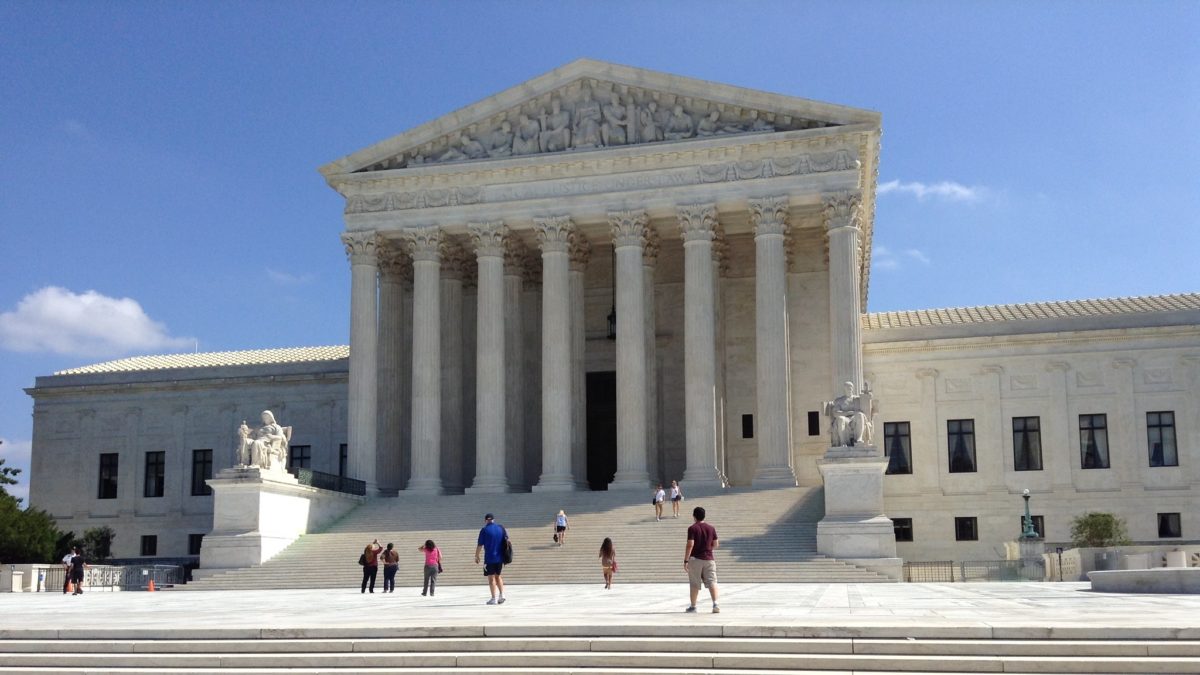During oral argument in Dobbs v. Jackson Women’s Health Organization, on which a decision is expected this summer, Justice Amy Coney Barrett caused controversy by raising questions about safe haven laws, which allow a baby to be anonymously placed in a secure location where the baby will be safe until cared for soon (such as an emergency room or a police or fire station).
This act is considered a legal relinquishment of parental rights and the child is cared for by the state until a permanent, adoptive home is found. Safe haven laws exist in all 50 states and the District of Columbia and were enacted in response to cases of child abandonment, including heartbreaking cases of deceased newborn infants found in public bathrooms or trash containers.
Some were upset by Justice Barrett’s line of inquiry, suggesting she was insensitive to imply that a woman grappling with an abortion decision could have her problem easily resolved by enduring a “forced pregnancy” and then leaving her baby at the local fire station.
Putting to one side whether “forced pregnancy” is an apt description of the most natural consequence of sex, it is doubtful that Justice Barrett, a mother of seven children including two by adoption, is ignorant of the complexity of that decision or would minimize the sacrifice inherent in its choice. Instead, we should understand Justice Barrett’s questions as appropriate judicial scrutiny of the original justification of the constitutional right to abortion and whether that justification continues to be defensible under the doctrine of stare decisis.
When New Facts Come to Light
Under the doctrine of stare decisis, the Supreme Court refrains from overruling its prior decisions absent special justification. It will only overturn past precedent after careful inquiry and analysis, which begins with asking whether the prior decision was wrongly decided in the first place.
An erroneous decision alone, however, does not justify overruling precedent. The Court will explore additional factors such as whether there have been changes to the facts or law which might justify overruling it, or whether the general public has come to rely on the decision to such an extent that the court should stand by it.
It was in pursuit of this sort of inquiry that Justice Barrett invited Julie Rikelman, attorney for Jackson Women’s Health, to explain whether the reasons set forth to justify the creation of the abortion “right” still make sense today. Barrett noted that the Roe v. Wade and Casey v. Planned Parenthood decisions “focused on the consequences of parenting and the obligations of motherhood that flow from pregnancy” and asked whether safe haven laws respond to that problem. Later she asked Solicitor General Elizabeth Prelogar a similar question: in light of new options like safe haven laws, can we still say that women need abortion to avoid parenting?
In Roe, Justice Harry Blackmun held that a woman’s right to privacy included the decision to terminate her pregnancy because the “detriment that the State would impose upon the pregnant woman by denying this choice altogether is apparent.” In describing this “apparent” detriment, however, Justice Blackmun barely focused on pregnancy.
After a brief but vague reference to “harms medically diagnosable even in early pregnancy” (it’s not clear whether he meant harms to the pregnant mother or diagnosable health conditions of the fetus), he focused entirely on the stigma of unwed motherhood, the distress “associated with the unwanted child,” and the problem of “bringing a child into a family” unable to care for it. In Casey, the Supreme Court said women rely on abortion to “participate equally in the economic and social life of the Nation.”
This is what Justice Barrett was getting at: if all 50 states and D.C. have resources in place to assist mothers with parenthood, can we still make the legal argument that women need abortion?
There is no longer a significant social stigma associated with “unwed motherhood.” In 1970, about 10 percent of children were born outside of marriage, but today that number as a portion of all births is 40.5 percent.
What about the “unwanted child” with no family to care for her? Today, for each such child, there are nearly 40 families waiting in line to adopt. As an amicus brief signed by 240 women scholars and professionals demonstrates, empirical evidence demonstrates there is no causal link between the availability of abortion and women’s capacity to participate fully in society.
Roe Shifted All Responsibility to Women
As the court considers whether, in light of these factors, it should overrule Roe v. Wade, it will also need to ask whether the rationale for Roe was even right in the first place. Ironically, in emphasizing the “detriment” of motherhood to justify the right to abortion, Roe shifted the entire weight of the responsibilities of parenthood to the woman. Her choice is her problem. Abortion is an easy out for an irresponsible man — and cover for a culture that promotes ending a child’s life over building the social safety nets that help women and men to welcome children.
Justice Barrett’s inquiry suggests a different path than that taken by the Roe Court. Dobbs is the occasion for the Supreme Court to acknowledge that the “burdens” of parenthood don’t justify aborting the next generation. It is the opportunity to embrace a model of family law that recognizes that vulnerable women need communities of support — rather than to be abandoned to an isolated, sterile “privacy.”
Family law should hold fathers to meaningful responsibility for their children, support community networks to help a mother parent her child, and ensure that mechanisms like adoption and safe haven laws are available to stand in the gap when she is unable or unwilling to parent. The legal legacy of Roe posits that the continuation of pregnancy is a woman’s choice. The reality of Roe is that pregnancy and motherhood are too often a woman’s sole burden.
The message of Roe to women is that abortion is the necessary path to equality. The responsibility of pregnancy and parenthood need not and should not be the woman’s alone. Overturning Roe would be an important first step to correcting the harm it has wrought.









